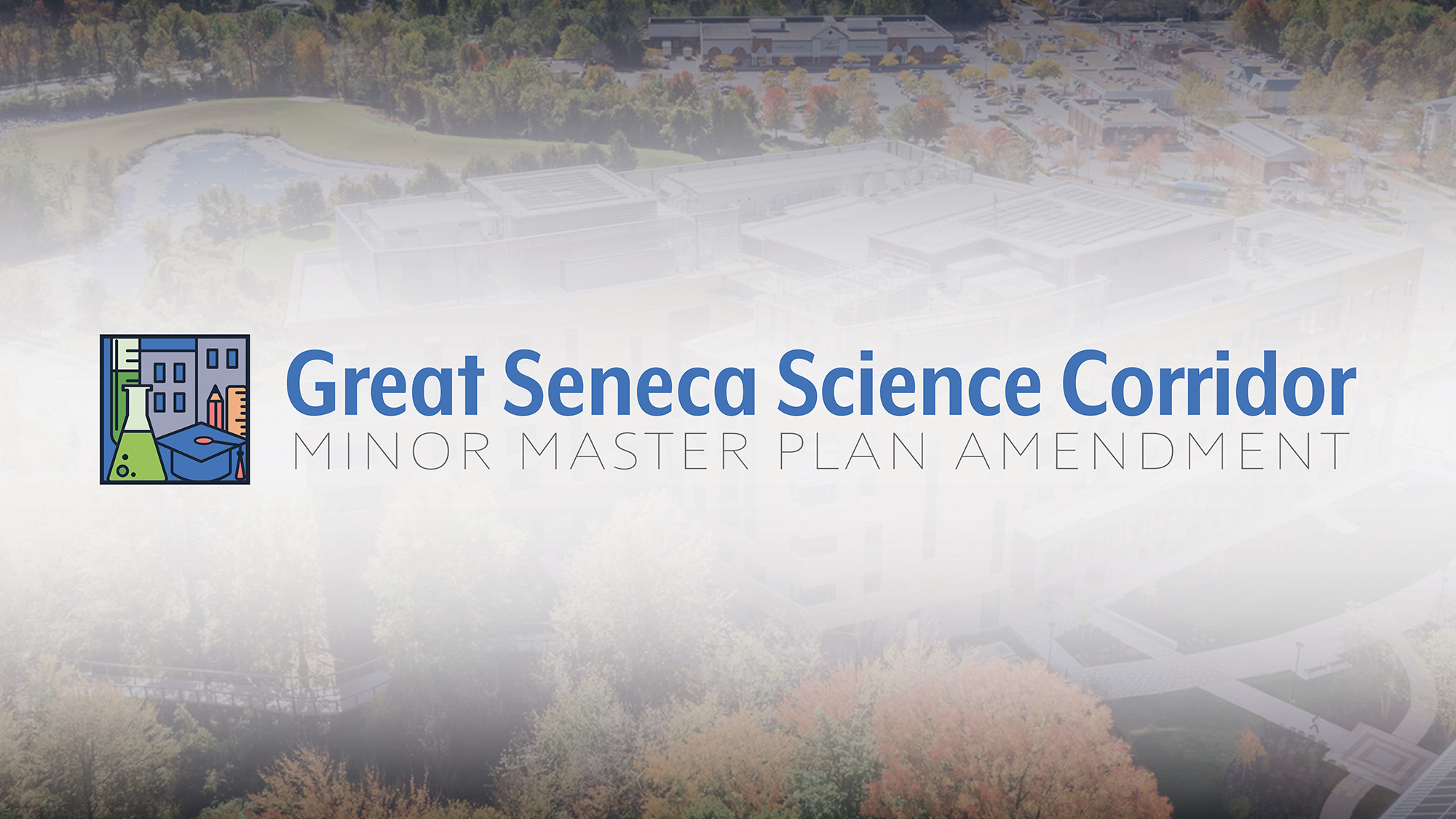
Montgomery Planning and Montgomery County Department of Transportation will discuss planning, transportation, and development projects in the area
WHEATON, MD – The Montgomery County Planning Department, part of The Maryland-National Capital Park and Planning Commission, and the Montgomery County Department of Transportation (MCDOT) are hosting a virtual community meeting on March 16 from 7:30 to 8:30 p.m. to share updates for planning and transportation projects in the Great Seneca Science Corridor Master Plan area. The area includes neighborhoods and employment centers surrounding the Shady Grove Adventist Hospital, the western Quince Orchard neighborhood, National Institute of Standards and Technology, Universities at Shady Grove and Rosemont.
Montgomery Planning’s Mid-County Planning Division staff will present on two planning efforts currently underway in this area—the Great Seneca Science Corridor Minor Master Plan Amendment and Corridor Forward: The I-270 Transit Plan—and on development projects within the plan area. MCDOT will present its proposal to enhance transit with near-term bus improvements that will improve access to employment, healthcare, and education centers surrounding the Universities at Shady Grove and other important destinations in Gaithersburg, Rockville and Shady Grove. Both presentations will be followed by a facilitated discussion and question and answer session. RSVPs are required to participate in the meeting.
About the Great Seneca Science Corridor Minor Master Plan Amendment
The 2010 Great Seneca Science Corridor Master Plan created a vision for a dynamic live/work community that would support a globally recognized biotechnology hub in the Shady Grove Life Science Center. Ten years later, the biotechnology sector is thriving, providing needed jobs to county residents.
The 2010 Plan included staging requirements to ensure that growth and change in the Life Sciences Center do not overburden the surrounding communities. These staging requirements are aimed at preserving residents’ quality of life by ensuring that growth is delivered and timed with the infrastructure necessary to support growth, especially transit. Since the plan’s adoption, however, the existing staging requirements have impeded further growth in this leading biotech hub as many of the requirements rely on the funding, construction and operation of the Corridor Cities Transitway. The Great Seneca Science Corridor Minor Master Plan Amendment will review the framework that established these regulations in 2010 and assess the growth, development and infrastructure investment that have occurred over the past decade. The Minor Master Plan Amendment will also identify strategies to advance progress toward the vibrant live-work community envisioned in the 2010 Plan and support the vital life science industry.
This Minor Master Plan Amendment will not amend any of the zoning recommendations from the 2010 Plan. Zoning recommendations dictate the maximum height and area of buildings and type of allowable land uses for each property.
About Corridor Forward: I-270 Transit Plan
The Corridor Forward: I-270 Transit Plan will produce a prioritized list of transit options and an implementation plan detailing the milestones and resources necessary for Montgomery County to provide transit to residents and workers within communities along the I-270 corridor. The plan process includes a phased approach with opportunities for public input. Montgomery Planning and its consultant team are analyzing the costs and benefits of potential transit options for the I-270 corridor. With the community’s input, Montgomery Planning will then prioritize transit options based not only on ridership and travel times, but also on the county’s strategic, economic, environmental and equity values. Then, Montgomery Planning will identify the major steps needed for the county to realize the highest-priority project(s) when funding is available. Without a clear understanding of corridor transit priorities, funding resources could be spread thinly across multiple projects, making it more difficult to advance any single option.
To create the plan, Montgomery Planning is working with state and county agencies, neighboring jurisdictions, County municipalities, advocacy groups, and community members as we develop transit options and an evaluation methodology. Montgomery Planning also is engaging community members along the I-270 corridor about their needs and values related to transit through the Corridor Forward Plan’s Transit Values Questionnaire.
About the proposed Great Seneca Transit Network
Recognizing the need for frequent, direct, and high-quality transit in the Great Seneca area, MCDOT developed a proposal for a near-term transit solution that would increase access and mobility in Shady Grove, Gaithersburg, Rockville, Life Sciences, the Universities at Shady Grove, and surrounding communities.